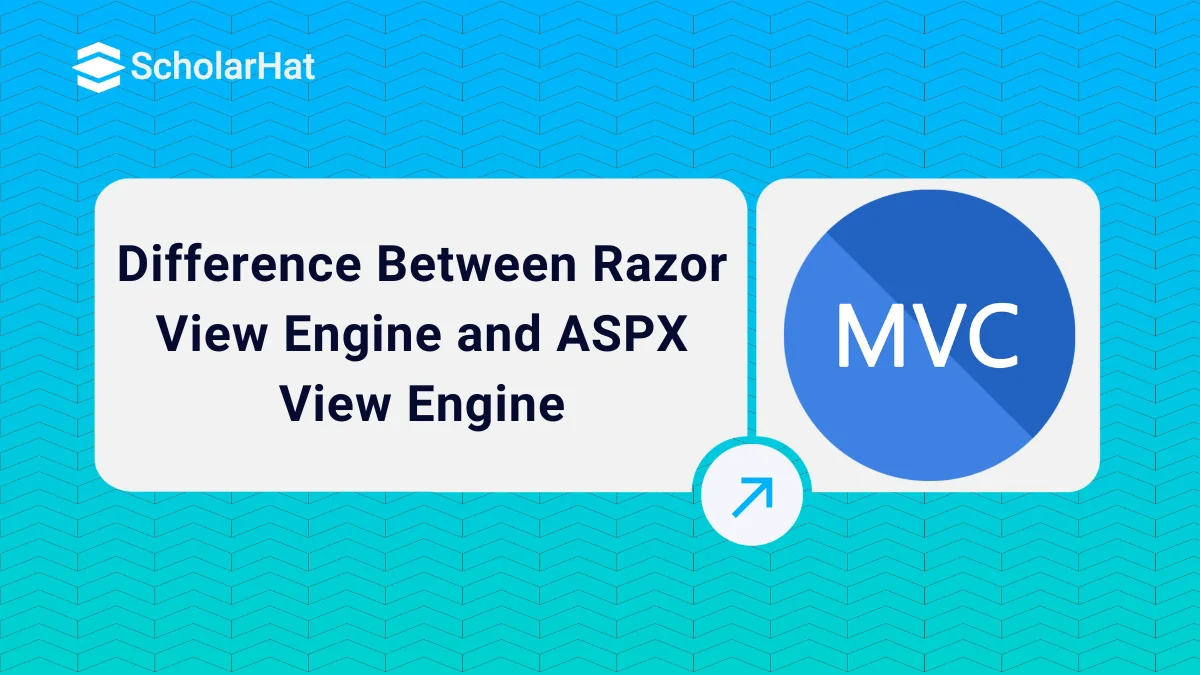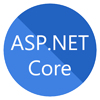26
DecDifference Between Razor View Engine and ASPX View Engine
Razor View Engine and ASPX View Engine: An Overview
View Engine is responsible for rendering the view into HTML form to the browser. By default, Asp.net MVC supports Web Form(ASPX) and Razor View Engine. There are many third-party view engines (like Spark, Nhaml, etc.) that are also available for Asp.net MVC. Now, Asp.net MVC is open source and can work with other third-party view engines like Spark, and Nhaml. In this MVC Tutorial, I would like to expose the difference between Razor & Web Form View Engine.
What is ASPX View Engine?
- In ASPX View Engine, The syntax used for writing a view is the same as the syntax used in ASP.Net web forms.
- The file extensions are also the same as for ASP.NET web forms such as .aspx, .ascx, and .master.
- The ASPX view engine is the default view engine for MVC 1.0 and MVC 2.0.
- Implementing the unit testing framework with the ASPX View Engine is quite complex.
- It uses "<%= %>" or "<%: %>" to render server-side content.
Example:
<ul>
<%foreach (var employeeNo in Employees) { %>
<% if (employeeNo .IsInCompany)
{ %>
<p><%=employeeNo.EmployeeName%> is in company</p>
<% }
else
{ %>
<p><%=employeeNo.EmployeeName%> is not in company</p>
<% } %>
<%} %>
</ul> What is Razor View Engine?
- The Razor View Engine is an advanced view engine available in MVC 3.0 and later versions.
- It uses the "@" character instead of "<% %>" as used by the ASPX View Engine.
- It does not require the code block to be closed.
- It is compatible with a unit testing framework.
- The Razor template does not require the controller or web server to host it, so its views are fully testable.
- The file extension of a Razor view is cshtml (for C#) and vbhtml.
- By default, all text from the @ expression is HTML encoded always.
- It is not a new language, It that is easy to learn.
<ul>
@foreach (var employee in Employees)
{
@if(employee .IsinComapany)
{
@employee .EmployeeName is in company
} else {
@employee.EmployeeNameis in company
}
}
</ul> Advantages of Razor View Engine:
- It is easy to learn. You can also use our existing HTML skills.
- Razor View Engine is Compact, Expressive, and Fluid.
- It helps us to minimize the coding and provides us with a fast and fluid coding workflow.
- The parse is smart enough and It is also able to decide at run time what is a code element and what is a content element.
Razor View Engine VS Web Form(ASPX) View Engine
System.Web.Razor.System.Web.Mvc.WebFormViewEngine. @Html.ActionLink("SignUp", "SignUp") <%: Html.ActionLink("SignUp", "SignUp") %> System.Web.UI.Page class which makes the testing complex.The disadvantage of web form view engine
1. Undefined Architecture
Here Web Forms does not have a predefined architectural approach. Programmers are free to choose their own architecture, So it can lead to inconsistencies across different projects and teams.
2. Complex page size and Less Performance
One of the main issues with using ViewState is that it is stored within the page itself, This can result in the page size becoming excessively large, which can, in turn, impact the overall performance of the application.
3. Testing and SEO have limited support
One of the main challenges with the code behind the approach is that it can lead to tightly coupled architecture, making it complex to unit-test code. Testing is an essential part of the web app development process, as it allows programmers to ensure that individual units of code work as expected before they are integrated into the larger application. But, with tightly coupled architecture, it becomes almost impossible to unit test individual pieces of code, leading to potential bugs and errors in the final application.








